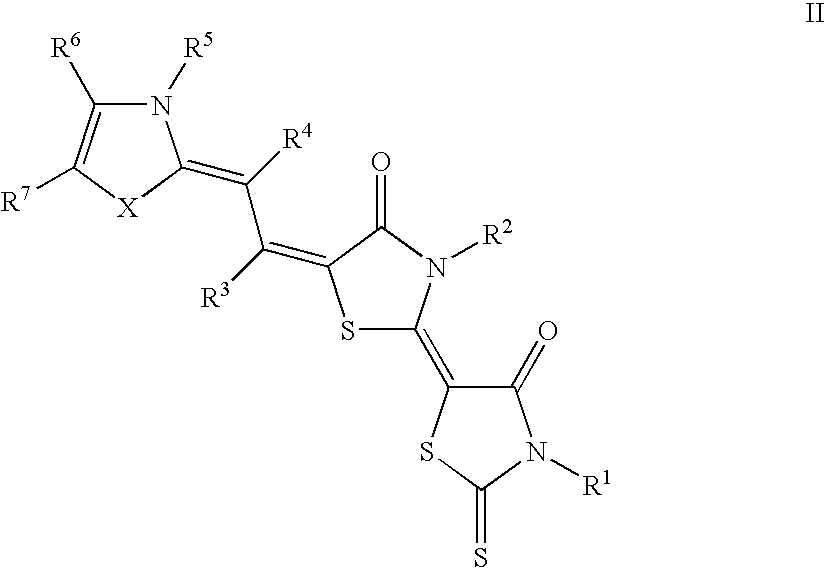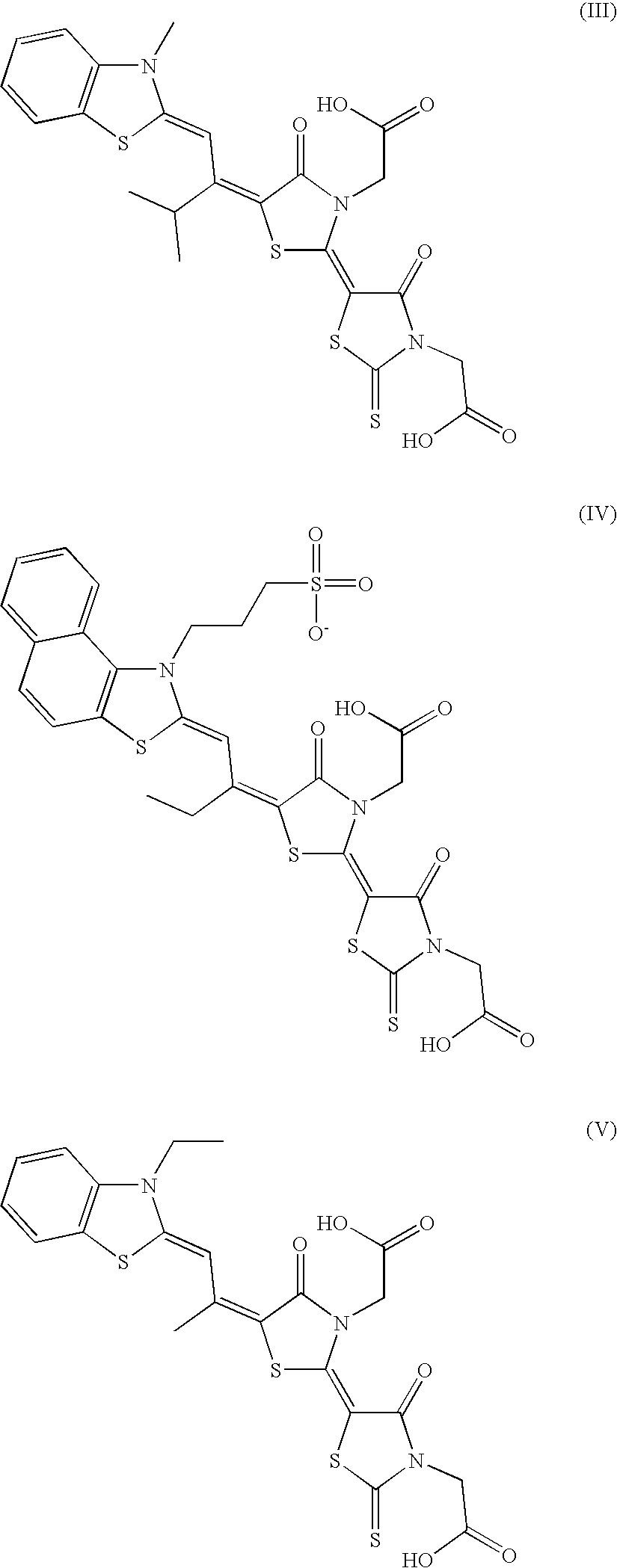Photographic materials having improved keeping properties
a technology of silver halide and materials, applied in the field of photographic silver halide materials, can solve the problems of reducing contrast, speed of emulsion, increasing contrast, etc., and achieve the desired level of contrast, prevent speed gain in emulsion over time, and reduce the extent of speed gain over time
- Summary
- Abstract
- Description
- Claims
- Application Information
AI Technical Summary
Benefits of technology
Problems solved by technology
Method used
Image
Examples
example 1
[0071]An AgClBr emulsion of 70 mole % AgCl content, having grains of cubic habit and an edge length of 0.21 μm was made in a growth reactor containing aqueous ossein gelatin at 53° C. by the usual balanced double-run precipitation method, using two aqueous feedstock solutions, one containing 3M AgNO3, and the second containing 2.1M NaCl and 0.9M NaBr, within which were dissolved both the dopants used (see below) prior to starting precipitation. The dopants were thereby introduced uniformly throughout the grains during precipitation.
[0072]Emulsion 1 was prepared containing 1.4×10−7 moles of Cs2Os(NO)Cl5 and 2.0×10−7 moles of K2IrCl6 per mole equivalent of silver (Ag mole).
[0073]Emulsion 2 was prepared in an identical manner to Emulsion 1, except that the dopants added were 3.3×10−7 moles of Na2RhCl5.H2O and 2.0×10−7 moles of K2IrCl6 per Ag mole.
[0074]After desalting by ultrafiltration, each of these emulsions was chemically sensitised by heating with 3.0 mg of Na2S2O3.5H2O and 3.0 mg...
example 2
[0084]Emulsion 3 was made by an identical method to that of Emulsion 1, except that the growth reactor temperature was lowered to 49° C., causing the grain size to be reduced to a mean edge length of 0.185 μm, and the dopant additions were increased to provide 2.0×10−7 moles of Cs2Os(NO)Cl5 and 4.0×10−7 moles of K2IrCl6 per Ag mole.
[0085]Emulsion 4 was made identically to Emulsion 3, except that the iridium co-dopant was entirely omitted.
[0086]Emulsion 5 was made identically to Emulsion 3, except that the dopants were 3.5×10−7 moles of Na2RhCl5.H2O and 5.0×10−7 moles of K2IrCl6 per Ag mole.
[0087]These emulsions were each chemically sensitised by heating with 3.8 mg of Na2S2O30.5H2O and 3.8 mg of KAuCl4 per Ag mole.
[0088]Separate coatings of Emulsions 3 and 4, spectrally sensitised with Dye III, were made exactly following Examples 6 and 7 of U.S. Pat. No. 6,573,021, except that the 2-methylthio-4-hydroxy-6-methyl-1,3,3a,7-tetraazaindene component was omitted. The nucleator ratio of ...
PUM
| Property | Measurement | Unit |
|---|---|---|
| n-octanol/water partition coefficient | aaaaa | aaaaa |
| n-octanol/water partition coefficient | aaaaa | aaaaa |
| pH | aaaaa | aaaaa |
Abstract
Description
Claims
Application Information
 Login to View More
Login to View More - R&D
- Intellectual Property
- Life Sciences
- Materials
- Tech Scout
- Unparalleled Data Quality
- Higher Quality Content
- 60% Fewer Hallucinations
Browse by: Latest US Patents, China's latest patents, Technical Efficacy Thesaurus, Application Domain, Technology Topic, Popular Technical Reports.
© 2025 PatSnap. All rights reserved.Legal|Privacy policy|Modern Slavery Act Transparency Statement|Sitemap|About US| Contact US: help@patsnap.com



